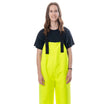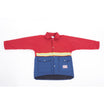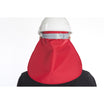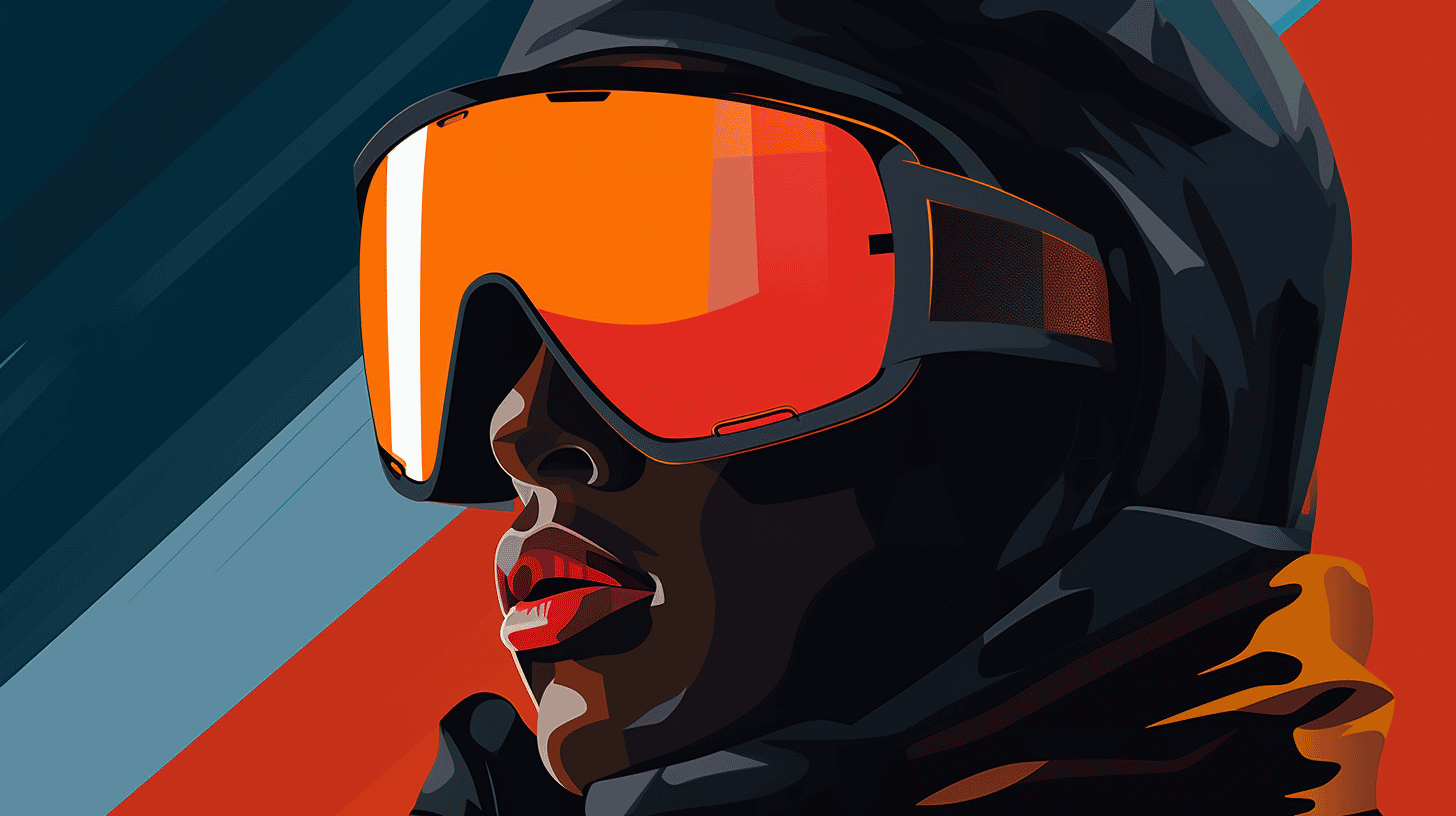With the increasing demand for work safety, high-visibility clothing has become a staple in various industries. It's a potent tool to protect workers from collisions or accidents, particularly in low-visibility conditions. However, worker comfort should not be compromised for safety. This article aims to guide you through five essential tips to select high-visibility clothing that not only ensures safety but also offers comfort to the wearer. These tips will help you invest wisely in workwear that can enhance productivity without sacrificing the wellbeing of your workforce. From understanding the importance and use of high-visibility clothing to checking for compliance with safety standards—let's delve into some crucial aspects.
Understanding High-Visibility Clothing
High-visibility (Hi-Vis) clothing, an unquestionable necessity in numerous work environments, is often overlooked in terms of its significance. Visual representation from a distance, as provided by Hi-Vis garments, substantially reduces the likelihood of accidents and mishaps on worksites. But what is high-visibility clothing and how does it function? Let's dive deeper into the intricacies of these vital pieces of workwear.
Importance in Work Environment
High-visibility clothing, predominantly seen in neon colours and noteworthy reflective strips, is an asset in industries like construction, logistics, and emergency services. Here's why:
- Safety: Hi-vis clothing, particularly in poor light or adverse weather, substantially increases visibility hence preventing accidents. Therefore, workers can ensure their safety while focusing on their tasks.
- Compliance: Generally, labor regulations and workplace guidelines often mandate the use of Hi-Vis clothing. So, staying dressed in the right gear means meeting legal requirements and upholding professional standards.
- Recognition: Hi-Vis clothing is the uniform for specific roles in different industries. Thus, it's not just safety gear—it's a means of instant identification and acknowledgment of duties.
Considering that workers often endure adverse conditions, achieving comfort and safety with high-quality gear is fundamental. An excellent high-visibility vest or jacket can provide warmth, water resistance, and breathability factors that are all equally important for maintaining a healthy working condition.
Functionality and Use
High-visibility clothing uses intense colors that are easily discernible from any background during the day, while the reflective strips reflect light to make the wearer visible in darker conditions. Consequently, these clothes work efficiently to safeguard, differentiate, and signify the person wearing them.
Here's a simple guide to using high-visibility clothing:
- Always wear Hi-Vis clothing that fits correctly. Oversized or undersized clothes could lead to discomfort and restrict movement.
- Be mindful of the colors. Yellow is prominent against dark backgrounds, and orange stands out against light backgrounds.
- Use reflective accessories, such as armbands or belts, to enhance visibility further in low-light environments.
- Ensure that the clothing is clean and well-maintained; faded colors, dirt, or damage will reduce visibility and efficiency.
Getting to grips with high-visibility clothing's role and practical usage informs better decisions when it comes to selecting the appropriate work gear. Thus, comprehension of this safety equipment equips workers with the knowledge needed to restrict workplace hazards effectively. Now the glow of your neon workwear won't just signify safety, but also your informed choice rooted in understanding.
Tip 1: Consider the Material
When choosing high-visibility clothing for safety purposes, the material is an aspect that often goes overlooked. However, it's crucial to be conscious about what your high-vis wear is made of. The material can drastically impact the comfort, performance, and longevity of your safety gear.
Breathability
It is not just about being visible, but also about comfort. If you are someone who spends a significant amount of time wearing visibility-enhancing outfits, breathability is a non-negotiable feature. Good breathable fabric can help regulate your body temperature, ensuring you stay cool and comfortable during warm weather.
Materials such as mesh, lightweight polyester, or those with moisture-wicking properties can be great choices. With their open-weave structure, they allow air to circulate freely. You'll not only gain the benefit of visibility but also the ability to work unimpeded by discomfort.
Durability
The longevity of your high-visibility clothing hinges on its durability. Low-quality materials will wear out faster, and you may find yourself needing replacements sooner than you'd expected.
When thinking about durability, consider materials such as heavy-duty polyester or reflective striping with a highly resistant backing. They are designed to withstand the challenges of harsh working conditions, increasing the life span of the clothing.
Climatic Suitability
Your choice of material should also take into account the climate you'll be working under. For instance, heavy-duty polyester may be a great choice for durability, but it could be less suitable for hot and humid climates due to its heavier weight and limited breathability.
In colder climates, you might want to opt for materials with thermal properties. Modern textile innovations offer options that retain heat yet offer a decent degree of breathability, helping you stay comfortably warm and safe in low-visibility situations.
Remember, the goal is not just to wear high-visibility clothing but to wear it comfortably and durability for as long as your job demands. When making a choice, always consider breathability, durability, and climatic suitability. The right material not only enhances your comfort but also contributes to your safety in the long run.
Tip 2: Assess the Design and Fit
When it comes to getting the most out of your workout gear, the design and fit are two critical factors that should never be overlooked. Many people, particularly those new to fitness, have a tendency to prioritize aesthetics over functionality. While there's no denying the confidence boost that comes from sporting a stylish outfit, it's important to bear in mind that comfort and freedom of motion are extremely important for a successful workout.
Easy Movements
The design of workout gear can greatly impact the ease of your movements. Clothes that hinder movement can lead to decreased performance and can pose injury risks. For instance, tight jeans may look great on you, but they constrict movements and could even lead to muscle strains or pulls. The same applies to workout gear.
Instead, choose garments with designs intended to enhance athletic performance. Check out apparel with features like:
- 4-way stretch fabrics that increase mobility, not limit it
- Moisture-wicking material to keep you dry and comfortable
- Flat-lock seams to minimize chafing
Remember, your gear should work with you, not against you.
Appropriate Sizing
Getting the proper fit is just as crucial as finding the right design when it comes to enhancing your performance and comfort. Remember, the sizing can vary by brand or even by item within the same brand. What works for someone might not work for you.
Here are tips to help you choose the correct size:
- Measure yourself accurately - use a cloth tape measure and note down your measurements: chest, waist, hip, and inseam depending on the garment.
- Check the size chart - Most brands provide a size chart, make sure to refer to it.
- If you are in-between sizes, choose the larger size – comfort takes precedence, and the slightly bigger size will ensure that your movement is not inhibited.
Investing in workout gear that has the right design for functionality and is the right fit for you can be a game-changer in your fitness journey.
Tip 3: Check for Compliance and Safety Standards
Far from being merely a fashionable piece of work attire, your high-visibility clothing functions as an essential security measure, too. It's not uncommon for worksites to be rife with potential hazards, from moving machinery to low-light conditions. That's why it's crucial to emphasise the importance of compliance and safety standards when selecting high-visibility clothing.
Standard high-visibility clothing must meet stringent specifications. This ensures that you, as an employee, offer the required level of visibility, especially in high-risk scenarios. To secure the safety of employees, various legislations and standards are employed worldwide, dictating the necessary requirements for high-visibility clothing in different scenarios. Therefore, it is imperative that employers and employees alike understand and adhere to these standards for optimal safety.
When striving to meet compliance and safety standards, consider the following facets:
- Material Brightness & Reflectivity: The most vital element of high-visibility clothing is its visibility. Thus, the brightness and reflectivity of the material used are essential to assess, as they impact how visible you are in various conditions.
- Design & Construction: The design of the clothing should enable easy wear, while the construction must be durable to withstand the frequent use typical of work attire.
- Compliant Markings: Look out for markings or labels that indicate the clothing's compliance with safety standards. These markings demonstrate that the clothing has been tested and approved for use under certain conditions.
Remember, it's not only manufacturing standards that matter but also maintenance standards. Even the highest-quality high-visibility clothing can lose its effectiveness over time with regular use, cleaning, or exposure to tough conditions. So, ensure that garments are inspected regularly to sustain their safety efficacy.
"Safety is a state of mind, but compliance ensures it."
Although it may appear to be an ordinary piece of protective wear, your high-visibility clothing is instrumental in maintaining workplace safety. Remaining in compliance with safety standards gives both employers and employees a peace of mind. Check for these standards; it's one small step for you, but it's a leap towards a safer workplace environment.
Tip 4: Analyze Reflection and Fluorescence Capabilities
Visibility assumes an essential role in safety measures, particularly when it comes to selecting appropriate workwear. An often unheard but vital piece of this puzzle is the analysis of reflection and fluorescence capabilities. As we move forward, let's understand these aspects a bit more while considering high-visibility clothing.
High-visibility clothing is a must-have for workers in several industries, such as construction, transportation, law enforcement, and more. The effectiveness of these garments hangs largely on their ability to reflect light and produce a bright, visible contrast against any background, at any given time of the day or night.
The two key features that boost the visibility of these clothes come down to reflection and fluorescence capabilities. Reflective elements are effective under darker conditions, while fluorescent colours work wonders in various lighting conditions.
Reflective elements on clothing include stripes, bands, or other patterns incorporated into the fabric. These materials work exceptionally well under headlights or streetlights, bouncing back the light towards its source, making the wearer visible. Higher reflectivity contributes to higher visibility.
On the other hand, fluorescent colours, which you might frequently spot in the form of bright yellows, oranges or greens, serve a separate purpose. These hues absorb a portion of the invisible UV light and re-emit it to create more visible light. As such, they stand out against most backgrounds, making them perfect for workers in daylight, dusk, and dawn.
Consequently, when selecting high-visibility clothing, one must:
- Look for items that incorporate a balanced blend of reflective elements and fluorescent hues for maximum visibility.
- Ensure the clothing items have been tested and certified as per the required safety standards.
- Check the intended work environment and choose an outfit that aligns with it – a mainly reflective garment for night operations, a fluorescent one for daylight work, or a combination, depending on the demands of your workspace.
Therefore, understanding the crucial elements of reflection and fluorescence adds an extra layer of safety while selecting high-visibility clothes for the workplace. Be safety-conscious, stay visible, and keep protected!
Tip 5: Prioritize Comfort in All Aspects
When it comes to dressing, whether for work, for a casual day out, or for a special event, one prime consideration that should top your list is comfort. With the movement towards more relaxed workplace attire and the surge of athleisure trends, comfort has rapidly climbed up the style ladder, presenting an essential aspect to consider when you're putting together your wardrobe.
But why is comfort paramount?
- Impact on Productivity: A comfortable outfit can significantly enhance your productivity. Imagine working an 8-hour shift in an outfit that is tight around your waist or has itchy material. That's going to bring down productivity, isn't it? Comfortable clothes allow for better concentration and improved performance.
- Boosts Confidence: They say you should "dress for success," and part of that success comes from feeling comfortable in your clothes. When you're not constantly adjusting a tight shirt or struggling with a pair of high heels, you're more at ease—giving you an air of confidence that would otherwise be hard to match.
- Enhances Well-being: Comfort also has a direct correlation with your physical well-being. Clothes that are too tight or made from harsh materials can lead to physical discomfort and even health issues over time. On the other hand, comfortable clothes help to maintain proper body temperature, reduce stress, and overall, contribute to better health.
"Comfort should not be compromised as it can directly impact the wearer's productivity and well-being," says Sue Park, a renowned stylist. So next time when choosing an outfit, consider putting comfort first. It may not seem like a significant change, but prioritizing comfort can make a world of difference in enhancing your day-to-day productivity, boosting your self-esteem, and improving your health. It's time we change the perception that comfortable clothes aren't stylish. Prioritizing comfort doesn't mean sacrificing style; instead, it's about merging the two to produce a fashion statement that resonates with you personally. After all, the best-dressed person in the room is often the most comfortable one.
Conclusion
Choosing high-visibility clothing is not as straightforward as it seems and requires thoughtful consideration. Looking beyond mere visibility, factors such as the clothing's material, design, compliance to safety standards, reflective capacities, and overall comfort significantly impact both your safety and productivity.
At Rain Gear Pro, we understand the importance of each factor. We're committed to providing you with top-notch, Canadian-made work gear that boasts not only high visibility but also optimal comfort, durability, and safety. With each piece thoughtfully crafted using the industry's best materials, we promise you apparel that will stand the test of time and rigorous work environments.
Ultimately, embracing high-visibility workwear responsibly means prioritizing your safety without compromising on comfort or freedom of movement, and Rain Gear Pro is here to ensure your work attire fulfills all these parameters – and more.
Frequently Asked Questions
-
Why is selecting comfortable high-visibility clothing important?
Selecting comfortable high-visibility clothing is important because it allows the wearer to feel at ease and move freely while still being visible and safe in hazardous or low-light environments.
-
What features should I consider for comfortable high-visibility clothing?
When selecting comfortable high-visibility clothing, consider features like breathable and lightweight fabric, adjustable fittings, moisture-wicking properties, and functional pockets for convenience.
-
How can I ensure the right fit for high-visibility clothing?
To ensure the right fit for high-visibility clothing, refer to the manufacturer's size chart, measure yourself accurately, and consider trying on different sizes if needed. Opt for clothing that allows for easy movement without being too loose or restrictive.
-
What materials are best for comfortable high-visibility clothing?
Ideal materials for comfortable high-visibility clothing are typically breathable and lightweight, such as polyester and mesh fabrics. These materials offer good ventilation and moisture-wicking properties for enhanced comfort, especially in warm weather.
-
Are there any specific certifications I should look for in high-visibility clothing?
Yes, when selecting high-visibility clothing, look for certifications such as ANSI/ISEA 107 or EN ISO 20471. These certifications ensure that the clothing meets the necessary safety standards for visibility and reflectivity.





















Leave a comment
This site is protected by hCaptcha and the hCaptcha Privacy Policy and Terms of Service apply.